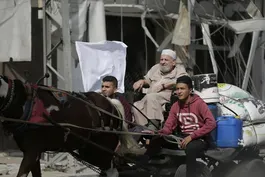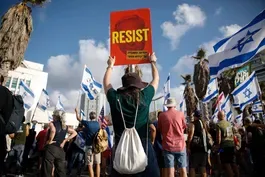
The 1st Native American medical doctor’s life and legacy
Clip: 11/5/2023 | 3m 30sVideo has Closed Captions
How Susan La Flesche Picotte became the 1st Native American medical doctor
November is Native American Heritage Month, a celebration of the traditions and languages of Indigenous communities in the United States. For our “Hidden Histories” series, we look at the story of Dr. Susan La Flesche Picotte, the first Native American to earn a medical degree.
Major corporate funding for the PBS News Hour is provided by BDO, BNSF, Consumer Cellular, American Cruise Lines, and Raymond James. Funding for the PBS NewsHour Weekend is provided by...

The 1st Native American medical doctor’s life and legacy
Clip: 11/5/2023 | 3m 30sVideo has Closed Captions
November is Native American Heritage Month, a celebration of the traditions and languages of Indigenous communities in the United States. For our “Hidden Histories” series, we look at the story of Dr. Susan La Flesche Picotte, the first Native American to earn a medical degree.
How to Watch PBS News Hour
PBS News Hour is available to stream on pbs.org and the free PBS App, available on iPhone, Apple TV, Android TV, Android smartphones, Amazon Fire TV, Amazon Fire Tablet, Roku, Samsung Smart TV, and Vizio.
Providing Support for PBS.org
Learn Moreabout PBS online sponsorshipJOHN YANG: November is Native American Heritage Month, a celebration of the traditions and languages of U. S. Indigenous communities.
Tonight, the story of the first Native American to earn a medical degree.
A pioneer at a time when she had few rights, either as a woman or as an American Indian, a child.
Of the 19th century American frontier, Dr. Susan La Flesche Picotte was a trailblazer in Native American healthcare as they were moved to Indian reservations, sometimes after brutal wars with US.
soldiers.
She was the youngest daughter of Mary Gail and Joseph La Flesche, who was of French and Indian descent and was the last recognized chief of the Omaha.
She was born in 1865, more than a decade after her father signed a treaty with the government giving up much of the Omahaús ancestral home.
Theyúd been moved to a reservation in northeastern Nebraska.
As white settlers pushed the frontier farther and farther west, her father saw assimilation as the key to survival.
Many Omaha rejected that, but his children took it to heart.
Embracing heritage, Susan ventured into the world of white America, confronting prejudice along the way.
She graduated second in the class of 1886 at what is now Hampton University, a historically black school in Virginia.
And at a time when women were considered ill-suited to be physicians, she enrolled at Womanús Medical College of Pennsylvania, the nationús first medical school for women.
She completed the three-year program in just two, graduating at the top of her class.
She was now a doctor, though as a woman she could not vote, and as a Native American, U.S. law did not consider her a citizen.
Then 24 years old, she chose to return to the Omaha reservation, becoming the sole doctor for 1,200 people across more than 400 square miles, including the Winnebago Reservation.
Armed with formal medical training, she pushed for better hygiene and food sanitation, including window screens to keep out disease carrying flies.
She tackled the health disparities facing Native Americans, including widespread disease, suicide, mental illness and alcohol abuse.
She led temperance campaigns persuading the government to ban liquor sales on reservations.
Her own husband, Henry, a yanked ensu, died in 1905 of tuberculosis, aggravated by alcoholism.
In 1913, even as her own health faltered, she opened the first privately funded hospital on a native reservation.
The Walt Hill, Nebraska facility treated all people in need, not just those from the reservation.
The hospital closed in 1940, and today the building is a national historic landmark.
More than a century after her death in 1915 at age 50, the modern day fruits of her efforts can be seen in health facilities on reservations.
But itús also not hard to imagine her among those who complain that the U.S. Indian Health Service is understaffed and underfunded.
Her determination is reflected in the face of a bronze sculpture in downtown Lincoln, Nebraska.
And in her words inscribed next to it, I shall always fight good and hard, even if I have to fight alone.
Gazans flee south as Israel’s military encircles Gaza City
Video has Closed Captions
Gaza residents flee south as Israel’s military encircles Gaza City (4m 37s)
Israel’s judicial reform protest groups shift focus to aid
Video has Closed Captions
How Israel’s judicial reform protesters shifted focus to aiding victims of Hamas (6m 46s)
What’s causing widespread drug shortages in the U.S.
Video has Closed Captions
What’s causing the unusually high number of drug shortages in the U.S. (6m 9s)
Providing Support for PBS.org
Learn Moreabout PBS online sponsorshipMajor corporate funding for the PBS News Hour is provided by BDO, BNSF, Consumer Cellular, American Cruise Lines, and Raymond James. Funding for the PBS NewsHour Weekend is provided by...















